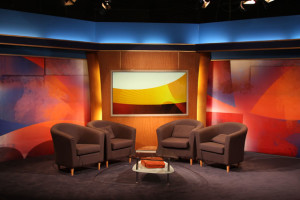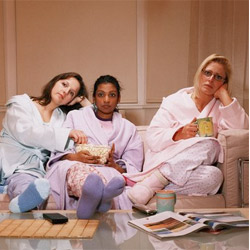One of the aspects of our hyper-connected world is that media is everywhere. Stop and notice how many things you interact with every day where music is a part of the experience:
- Turn on your phone and a musical icon is played as it powers up
- receive a call and a ringtone is played
- play any video game and hear music used throughout the game
- watch a Youtube video and see a pre-roll video ad – with catchy music accompanying the ad,
- tune in on any of the hundreds of cable TV shows and hear music in their opening theme, commercial breaks, segues from scene to scene, closing credits, and all through the show to enhance the mood of the scenes unfolding.
The reason that music is used in so many experiences like this is that music = emotion. If you want to connect with people on an emotional level, whether your trying to get them to buy a new car, watch your TV show, play your video game longer, buy your brand of phone, or simply entertain them, then music becomes a tool to enhance that emotional connection. Since music is the language that speaks directly to the soul, it can be used to communicate the emotional content around the video experience. It can also speak to the emotional aspects of what you are trying to communicate which may be completely opposite or missing from the visual – humor, fear, excitement, sadness, aggression, sophistication, confusion, relaxation, trust, simplicity, etc. Think of the Motel 6 radio ad with Tom Bodett narrating the Motel 6 company pitch in a relaxed Texas-drawl saying “… and we’ll leave the light on for ya”, enhanced by the sound of someone playing a Chet Atkins style guitar accompaniment with a texas-swing-style fiddle in the background.
Whenever I hear that music it immediately makes me feel that Motel 6 is a friendly company where I should expect a simple, pleasant, experience. I can picture the narrator sitting on a front porch of a Motel 6 playing an old Gretsch guitar, inviting me to stay there, even if though there is nothing visual in the radio ad. It’s one of the best examples of a brand image, enhanced by music, that I can think of.
Back in my college days we once had a guest lecture from the guy who composed music for the TV show M.A.S.H. (I was so impressed since it was the most popular TV show at the time) This was my first exposure to the world of people that made music to enhance TV or film productions. I was amazed at some the things he showed us during that lecture. He played raw video clips from the production, before the music was added – where we could see how the scene looked when he first got it.
Then he would talk about what he tried to accomplish with the underscore music to enhance what was unfolding in the scene. Finally, he would play the final edit of the scene with the underscore music included. If you’ve ever seen a demonstration like this you will notice right away how much the music draws you in on a much deeper emotional level than the video alone. All of the actors seem to be reading their lines with more emotion, even though you know that its exactly the same video as before, but somehow everything ties together much better.
 Recently one of my friends told me about a new talk-show project that he was getting involved in for Web/TV, covering women’s health & wellness. Being on the hunt for music composing opportunities, I asked him if they’d already picked music for their show, and if I could submit anything for consideration. He offered to setup a dinner meeting with the producers of the show so that I could talk with them directly, for which I’m forever grateful! (It helps to make friends with as many people as you can. You never know where opportunities may come from). When I met the producers they explained what the show was about (women’s health and wellness talk-show), the demographic of their target audience (women between the ages of 25 and 50), and the music needs for the show (theme for opening segment, music for commercial breaks, music queues for segues to other parts of the show, dramatic queues for the testimonials and interviews, etc.)
Recently one of my friends told me about a new talk-show project that he was getting involved in for Web/TV, covering women’s health & wellness. Being on the hunt for music composing opportunities, I asked him if they’d already picked music for their show, and if I could submit anything for consideration. He offered to setup a dinner meeting with the producers of the show so that I could talk with them directly, for which I’m forever grateful! (It helps to make friends with as many people as you can. You never know where opportunities may come from). When I met the producers they explained what the show was about (women’s health and wellness talk-show), the demographic of their target audience (women between the ages of 25 and 50), and the music needs for the show (theme for opening segment, music for commercial breaks, music queues for segues to other parts of the show, dramatic queues for the testimonials and interviews, etc.)
The show hadn’t officially started production but they were in the midst of arranging sponsorship, and securing funding, etc. They told me to submit anything for consideration ahead of time and they would listen to it. I immediately set myself to work to do my homework since oppor-knockety tunes but once. Better to strike while the iron is hot.
My Homework Assignment: Understanding the Genre I’m Writing For
As I saw it, the best way to understand what I needed to do was to carefully listen to the music used in other women’s shows that target a similar demographic. My wife was thrilled when I suddenly started loading up the DVR with every show that she liked, and even set aside time to watch them with her (The Ellen Show, Dr. Oz., TLC Network, Dr. Phil). As I watched these shows I kept a note pad and jotted down observations about the type of music used in various segments of the show, how long the music segments lasted, and instrumentation used. I also took notes about the specific sounds in the arrangements (electronic grooves, synth pads, funky guitar, ukulele, glockenspiel, whistling, etc) I started to become familiar with the kinds of things that would work well for this kind of show and distilled these down into a list of music styles and instrument sounds to use with my own music.
In doing this exercise I found that the music used in women’s shows was significantly different than the music used for a show targeting a male audience. It was educational to listen for this as I watched different shows. For example, women’s shows tend to have a more electronic, funky, or indie vibe to them.
 Men’s shows tend to have a heavier, more aggressive rock or blues-oriented vibe to them. Watch car commercials and you can really see this. Listen to the music behind an ad for a minivan commercial then contrast that to the music behind an ad for a high-performance car. You quickly understand who the audience is based on the music alone.
Men’s shows tend to have a heavier, more aggressive rock or blues-oriented vibe to them. Watch car commercials and you can really see this. Listen to the music behind an ad for a minivan commercial then contrast that to the music behind an ad for a high-performance car. You quickly understand who the audience is based on the music alone.
 Or check out the music for the Ellen Show, then contrast that to the music used for the opening of Conan O’Brien or Letterman. Guess which audience they are targeting based on the music.
Or check out the music for the Ellen Show, then contrast that to the music used for the opening of Conan O’Brien or Letterman. Guess which audience they are targeting based on the music.
After my research, I set myself to work to write an opening theme. In my own observations, I found that the opening theme for these kinds of talk shows is very short, anywhere from 5 to 10 seconds at most before the hostess appears in front of an audience of over-enthusiastic women clapping and screaming. But the ending credits might play that same theme for much longer. I wanted to come up with something that would work as a short intro segment or could be played for much longer at the end during the credits. I wanted it to contain all of the elements that I’d distilled from my own research for this type of show intro (upbeat, funky runway butt-shaking music, celebratory, funky guitar, power chords in the right places). Here is a clip of the intro theme I came up with for the Women’s Talk Show:
I sent the track to the producers and they liked it! They said it was exactly the kind of music they had in mind. I was elated. My research had paid off. Now it’s onto the next task of making dramatic queues, and queues for segues for the cooking segment. Time to spin up the DVR, it looks like I’ll be watching more TLC and Food Network. The wife will be happy that I’m not hogging the DVR with useless male-oriented shows about race cars, The Three Stooges, guys who live in the wild and eat bugs, rock bands, and stuff like that. It will be chick night on the TV for the foreseeable future. I’d better stock up on Kleenex if I watch anymore of those shows on the Hallmark Channel.
